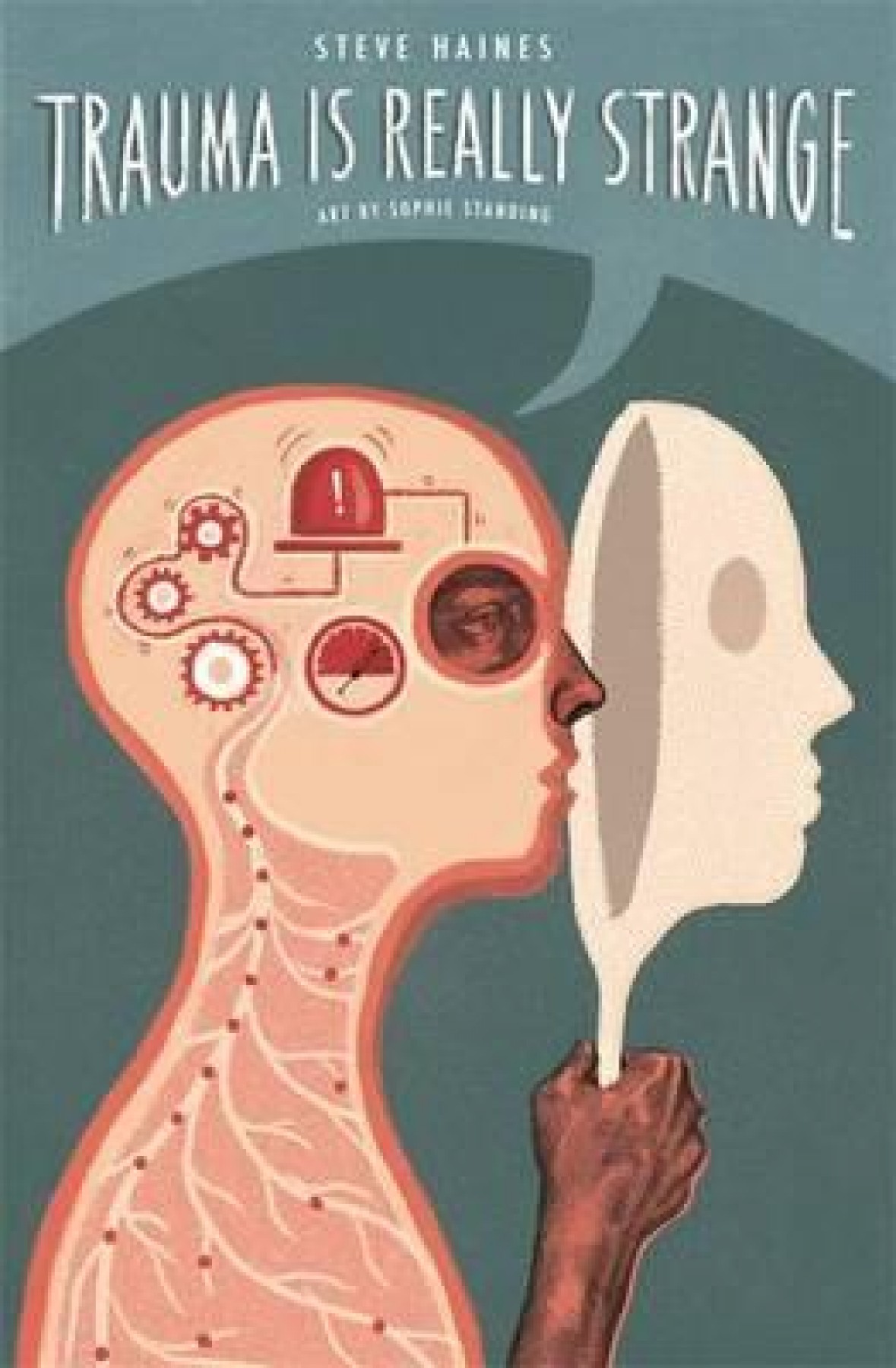This is a useful introduction to how trauma affects the brain and nervous system and what people can do to overcome the effects in everyday life. My knowledge was updated (e.g. our response to threat is more than just ‘fight or flight’). The book doesn’t address the most severe effects of early trauma – when someone has developed separate self-states to keep the awareness out of daily life (dissociative identity disorder). It’s in line with current thinking and refers to well-known researchers. The tone is encouraging and optimistic.
The graphic nature is inviting and the style is modern and although there are characters with dark and light skin, the main character is white and male. I was also disappointed to find small font text at the foot of most pages. It’s either a graphic book or it’s not! This text made unhelpfully brief references to other ideas and research. The references are cunningly concealed inside the cover flap.
The book starts well enough with a real-life example of transient dissociation but this is followed by a confusing mixture of symptoms of dissociation, hyperarousal/panic and shaking/tremors (restless legs are not a sign of shock).
The introduction to trauma which follows is good: wide-ranging and thought-provoking. It has three sections: trauma exists, we can heal from its effects, and healing involves the way our brains manage our bodies so our bodies have to get involved (talking therapy is not enough).
The second half examines how the brain and nervous system respond to threat. I didn’t find the explanation of the “new vagus” and “old vagus” control systems adequate. However, the three-stage response to threat (orient, mobilise, immobilise) was well done.
The next section uses helpful similes to explain the working of the amygdala and hippocampus, and how a neutral object or situation becomes a conditioned stimulus evoking unconditioned (inborn) anxiety responses.
I didn’t find the book well-organised; section headings or title pages would have helped me track the progression from overview to specifics and keep track of the three sections of the introduction.
The final quarter describes techniques and principles for healing. This collection risks giving a simplistic impression but each is presented with a rationale which draws on previous pages and together they support the book’s thesis that we can heal from trauma by understanding how our brain and nervous system work. There is a useful summing up.
Reviewed by Margaret Graham, Senior Clinical Psychologist

